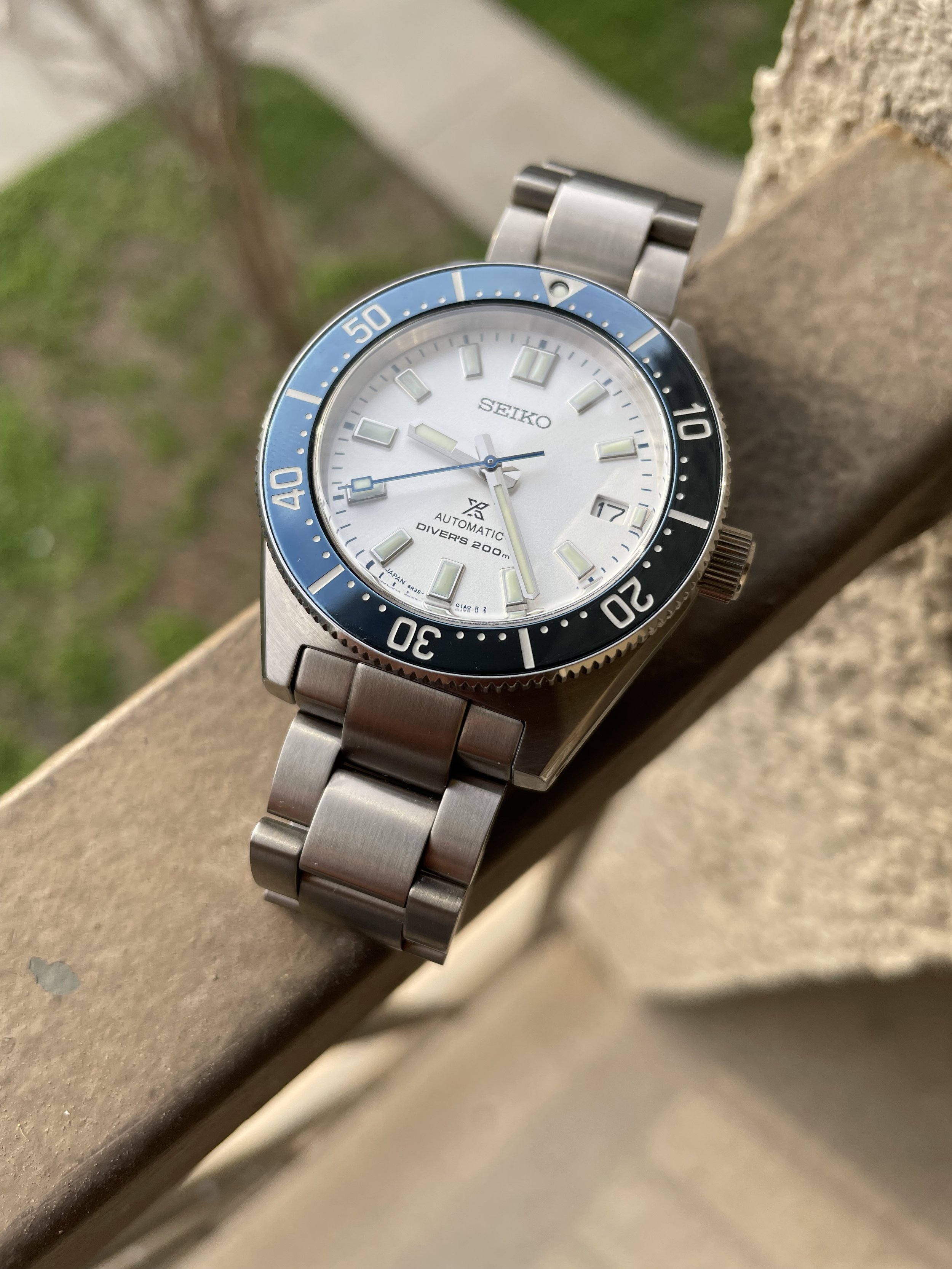At 40.5mm wide and 13mm thick, this line wore smaller than even the SKX line. Additionally, the vintage-inspired design attracted new fans to the brand that were turned off by the heftiness and flashiness of Tunas, Turtles, or Samurais. Sealing the deal was the price. These sold at around $1,000usd, depending on where you bought. The SPB line had all the elements for its wild success: Size, design, price.
The SPB213
A year after the initial fan-favorite launch, Seiko released the SPB213: A Limited edition model commemorating the brand’s 140th anniversary. This model is identical (confirmed by Seiko) to its 2020 brothers, but features a white dial and blue bezel unique to this line. Despite its limited edition status, the SPB213 maintains the same pricing as the non-limited models.





